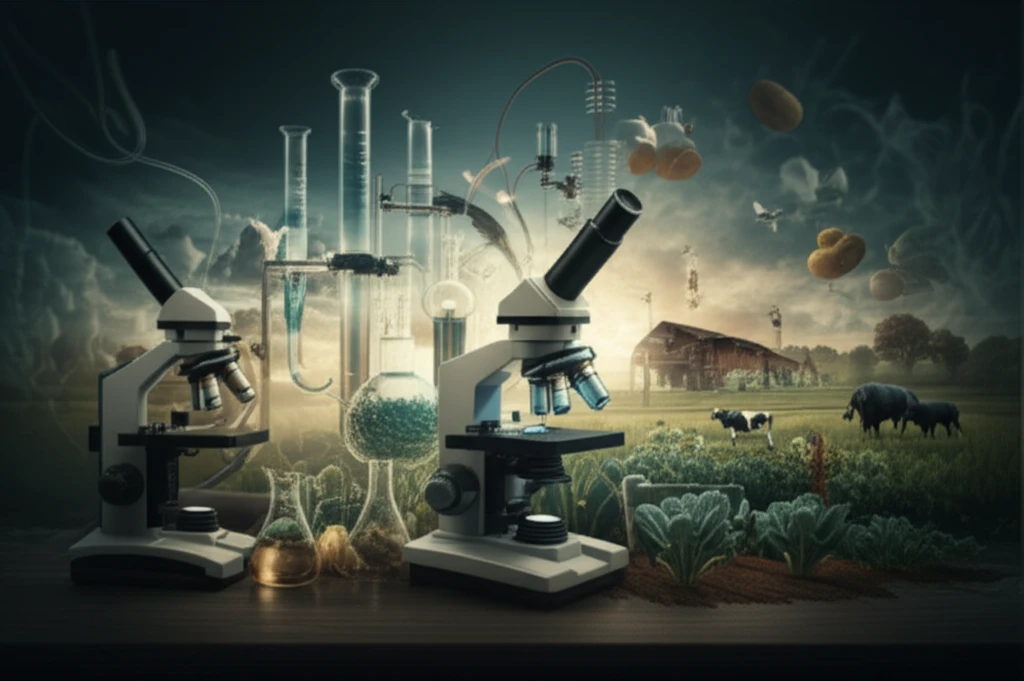
Is Your Food Safe? Unlocking the Power of Omics in Food Quality
"Dive into how genomics, transcriptomics, and more are revolutionizing food safety and transforming public health."
In today's world, ensuring the food we eat is safe and of high quality is more critical than ever. With a growing global population, maintaining a secure and sustainable food supply is essential. But how do we keep up with the evolving challenges in food safety? The answer may lie in a set of powerful tools known as 'omics.'
Omics technologies—including genomics, transcriptomics, proteomics, and metabolomics—are transforming how we understand and address food quality and safety issues. These approaches offer unprecedented insights into the microbial communities along the food chain, helping us to identify and mitigate risks more effectively. By leveraging these advanced techniques, we can improve food security and safeguard public health on a global scale.
Traditional methods of ensuring food safety often fall short in detecting new and emerging threats. Omics tools provide a more comprehensive view, allowing scientists and food producers to identify potential hazards before they become widespread problems. This article explores how these technologies are being used to enhance food quality, detect outbreaks, track contamination sources, and understand how microorganisms adapt to different environments. Stay tuned to discover how omics is paving the way for a safer and more secure food future.
Why Omics is a Game-Changer for Food Safety

The application of omics technologies in food safety marks a significant leap forward from traditional methods. Traditional techniques often involve culturing microorganisms, which can be time-consuming and may not capture the full diversity of microbial communities. Omics, on the other hand, allows for a more holistic and rapid assessment of foodborne hazards.
- Genomics: Focuses on the entire DNA of an organism, helping to identify specific genes related to virulence, antibiotic resistance, or adaptation to different environments.
- Transcriptomics: Examines all the RNA in a cell, providing insights into which genes are actively expressed under certain conditions. This can reveal how microorganisms respond to stress or interventions in the food production process.
- Proteomics: Studies the entire set of proteins produced by an organism, offering a direct look at the functional components of cells and their activities.
- Metabolomics: Analyzes all the small molecules (metabolites) in a biological sample, providing a snapshot of the biochemical activities and overall physiological state of an organism or food product.
The Future of Food Safety
The integration of omics technologies into routine food safety practices holds tremendous promise for the future. By increasing the speed and accuracy of pathogen detection, improving our understanding of microbial adaptation, and enabling more effective source tracking, omics is set to revolutionize the food industry. These advancements will not only enhance food quality and safety but also contribute to global food security and public health. As research continues and technology evolves, we can look forward to a safer, more sustainable, and secure food supply for all.
